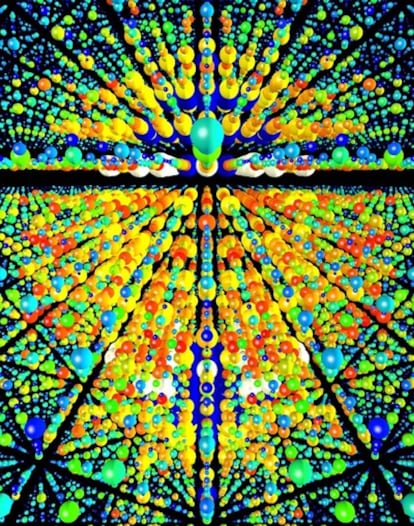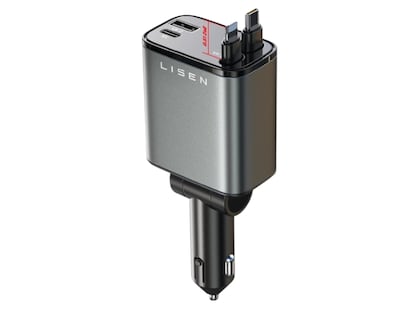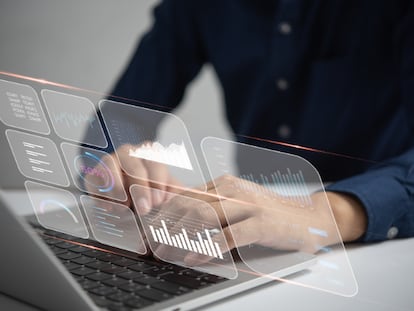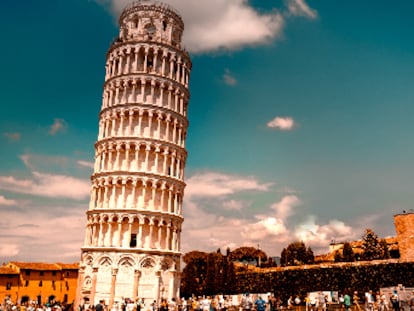The strange quantum dance of electrons
Quantum theory predicts that for two distant, entangled particles, measuring the properties of one particle instantaneously determines the properties of the other particle. Since the days of Einstein, entanglement has continued to spark vivid debates on the foundations of quantum theory. During the last decades, entanglement has emerged as the prime resource for quantum computers. Quantum computers are, potentially, extremely powerful computers with working principles based on quantum theory. The prospect of developing quantum computers and then integrating them with present day computers has stimulated intense theoretical and experimental research on entanglement in electronic systems. The ultimate goal is to use the quantum properties of individual electrons as the elementary building blocks of a quantum computer. My research is focused on understanding how to generate and detect entangled electrons in nanometre sized electrical conductors. In a recent experiment our theoretical prediction were confirmed, providing the first glimpse of evidence that electrons can indeed perform the strange entanglement dance.
In his famous work in the mid 1930's, Einstein, together with colleagues Rosen and Podolsky, formulated his critique of quantum theory - it can not be a complete theory of nature since it does not fully describe the properties of all its constituents. This was most apparent for a pair of entangled particles where quantum theory only ascribes certain properties to the pair, but not to the individual particles. Niels Bohr, the leading scientist in quantum theory at the time, answered within a year. There is no reason to demand of a physical theory that it fully should describe nature as it really is; we can only demand that it shall predict the outcomes of all possible measurements we can do, Bohr argued. Einstein, as well as many physicists over the years, never felt content with this. There have been numerous attempts, inspired by Einstein's ideas, to construct alternatives to quantum theory. However, whenever making predictions different from quantum theory, experiments have always decided in favour of quantum theory.
With the appearance of quantum information theory in the 1990's, the interest in entanglement took a new turn. Suddenly, fundamental properties of quantum theory were married with information science, presenting the prospect of a new, powerful breed of quantum computers. Motivated by the breathtaking development of classical computers in the last half century, researchers started to investigate the possibilities for quantum computing in electronic systems. This went hand in hand with the rapid development of nanotechnology, boosting the vision of a quantum computer based on the quantum properties of individual electrons in nanometre sized systems. It soon became clear that the road to a working electronic quantum computer would be long. In order to control the quantum properties of a single electron experiments needed to go to extreme conditions. Temperatures a fraction of a degree above absolute zero and meticulous efforts to shield the electrons from disturbances from the surrounding world were required.
To-date the next step, to control the properties of two entangled electrons, has yet to be taken experimentally.
This notion has motivated intense theoretical investigation of different schemes for generating and detecting entangled electrons. I, together with my Swiss colleagues, Markus B¨¹ttiker and Eugene Sukhorukov, proposed in 2004 to entangle electrons via a mechanism called two-particle interference. The inspiration for this idea came from quite an unexpected field of physics - astronomy. In the mid 1950s, two researchers, Robert Hanbury Brown and Richard Twiss, developed a new method to measure the fraction of the night sky occupied by visual stars. This method was based on the interference between two photons, or light-particles, emitted from different places on the surface of the star. To our surprise we realised that when transforming from photons in free space to electrons in nanosystems, the electrons in stark contrast to the photons came out entangled. We predicted that, albeit a direct demonstration of entanglement would be experimentally very difficult, other properties of the two-particle interference should be within reach using the accessible toolbox for electronic measurements. Three years after our prediction, in 2007 an experimental group in Israel realised the proposed electronic two-particle interferometer. It turned out that our theoretical predictions passed with flying colours.
Since publication of the experiment in the prestigious journal Nature, we have focused our work on the prerequisites for an unambiguous experimental demonstration of entanglement in the electronic two-particle interferometer. Very recently we published a theoretical investigation of how the temperature and the disturbances present in the experiment affect the entanglement. This work provides the experimentalists with a feasible route for detecting electronic entanglement. Hopefully, within a couple of years we will have an experiment that confirms beyond reasonable doubt that electrons know how to do the entanglement dance.
www.atomiumculture.eu

Tu suscripci¨®n se est¨¢ usando en otro dispositivo
?Quieres a?adir otro usuario a tu suscripci¨®n?
Si contin¨²as leyendo en este dispositivo, no se podr¨¢ leer en el otro.
FlechaTu suscripci¨®n se est¨¢ usando en otro dispositivo y solo puedes acceder a EL PA?S desde un dispositivo a la vez.
Si quieres compartir tu cuenta, cambia tu suscripci¨®n a la modalidad Premium, as¨ª podr¨¢s a?adir otro usuario. Cada uno acceder¨¢ con su propia cuenta de email, lo que os permitir¨¢ personalizar vuestra experiencia en EL PA?S.
?Tienes una suscripci¨®n de empresa? Accede aqu¨ª para contratar m¨¢s cuentas.
En el caso de no saber qui¨¦n est¨¢ usando tu cuenta, te recomendamos cambiar tu contrase?a aqu¨ª.
Si decides continuar compartiendo tu cuenta, este mensaje se mostrar¨¢ en tu dispositivo y en el de la otra persona que est¨¢ usando tu cuenta de forma indefinida, afectando a tu experiencia de lectura. Puedes consultar aqu¨ª los t¨¦rminos y condiciones de la suscripci¨®n digital.




























































